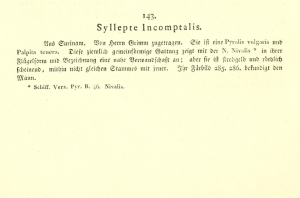

 +2Kontinente:MASA
+2Kontinente:MASA3. Biologie
3.1. Nahrung der Raupe
- [Malvaceae:] Malvaviscus arboreus (Beerenmalve, Tutenmalve)
- [Malvaceae:] Malvaviscus palmanus
- [Malvaceae:] Pavonia schiedeana
- [Malvaceae:] Pavonia peruviana
Solis et al. (2023: ) trugen in ihrer Revision der Typusart der Gattung Syllepte zusammen: "Larval host plants. Forty-six specimens at the NMNH have been reared in Costa Rica on two genera and four species of Malvaceae: Malvaviscus arboreus Cav., that occurs in southeastern U.S. south to South America; M. palmanus Pittier & Donn. Sm., that is endemic to Costa Rica; Pavonia schiedeana Steud., that occurs from Mexico south to South America; and P. peruviana Gürke, that occurs from Nicaragua south to South America (Janzen & Hallwachs 2009)."
(Autor: Erwin Rennwald)
4. Weitere Informationen
4.1. Faunistik
Hübner (1823: 18) beschrieb seine Art nach einem oder mehreren Faltern, die angeblich aus Surinam stammen. Das umfangreiche Sammlungsmaterial, auf das Solis et al. (2023) bei der Festlegung eines Neotypus zurückgreifen konnten, stammt ausschließlich von Costa Rica. Die Angabe "Surinam" wird daher leicht unsicher.
4.2. Typenmaterial
Das Typusmaterial von Hübner (1823) ist verschollen und wahrscheinlich zerstört. Solis et al. (2023: 345) legen für Syllepte incomptalis, Typusart der Gattung Syllepte einen Neotypus fest: "Below, we follow the regulations in the ICZN, Fourth Edition (1999) to designate a neotype for Syllepte incomptalis Hübner, 1819–21. We designate a neotype because there is “exceptional need” for progress in the definition and inclusion of species in Syllepte, currently a polyphyletic taxon which includes species from around the world (Mally et al. 2019) (ICZN 75.3.1), and to stabilize the nomenclature of species currently associated with this genus. We provide a description and diagnosis with morphological characters for Syllepte and how it is differentiated from other taxa (ICZN 75.3.2 and 75.3.3). Type material of Syllepte incomptalis Hübner, 1823 was deposited in the Naturhistorisches Museum Vienna (NHMW) (Groll 2017), where it and numerous other collection items were lost in the Hofburg fire during October 1848 (Horn et al. 1990); recently, Sabine Gaal-Haszler (pers. comm.), Lepidoptera curator at the NHMW, could not find any type material of S. incomptalis (ICZN 75.3.4). We provide evidence that the neotype is consistent with what is known of the former name-bearing type based on comparison of characters below, such as maculation and size, with Hübner’s illustration of S. incomptalis (ICZN 75.3.5). The original type locality is believed to have been from Suriname, and we and our colleagues were unable to locate material from Suriname resembling S. incomptalis in the MTD, MfN, MIZA, NCB, NMNH, NHMUK, NZCS, or ZSM, so we chose geographically close specimens from the tropical Western Hemisphere (ICZN 75.3.6). And finally, we state that the neotype will be deposited in the NMNH, SI, Washington, D.C. (ICZN 75.3.7)." Zum festgelegten Neotypus heißt es dann konkret: "Male. Costa Rica: Alajuela, Area de Conservación Guanacaste, Sector San Cristobal, Sendero Vivero, 10.86739, -85.38744, elev. 730 m., Larva on Malvaviscus palmanus 03/15/2006, ecl. 04/01/2006, Gloria Sihezar, collector, 06-SRNP-2089. COI Barcoded. [USNMENT01899038]. Forewing length: 10 mm. Deposited in the NMNH, SI, Washington, D.C."
(Autor: Erwin Rennwald)
4.3. Literatur
- Erstbeschreibung: Hübner, J. (1823): Zuträge zur Sammlung exotischer Schmettlinge [sic], bestehend in Bekundigung einzelner Fliegmuster neuer oder rarer nichteuropäischer Gattungen. Zweytes Hundert: 1-32, 8 unpaginierte Seiten, pl. [36]-[69]. Augsburg.
- Neotypus-Festlegung: Solis, M.A., Mally, R., Hayden, J.E. & M. Nuss (2023): Revision of the type species of Syllepte Hübner and other spilomeline genera recently synonymized (Lepidoptera: Crambidae). — Zootaxa, 5389 (3): 343–361.





